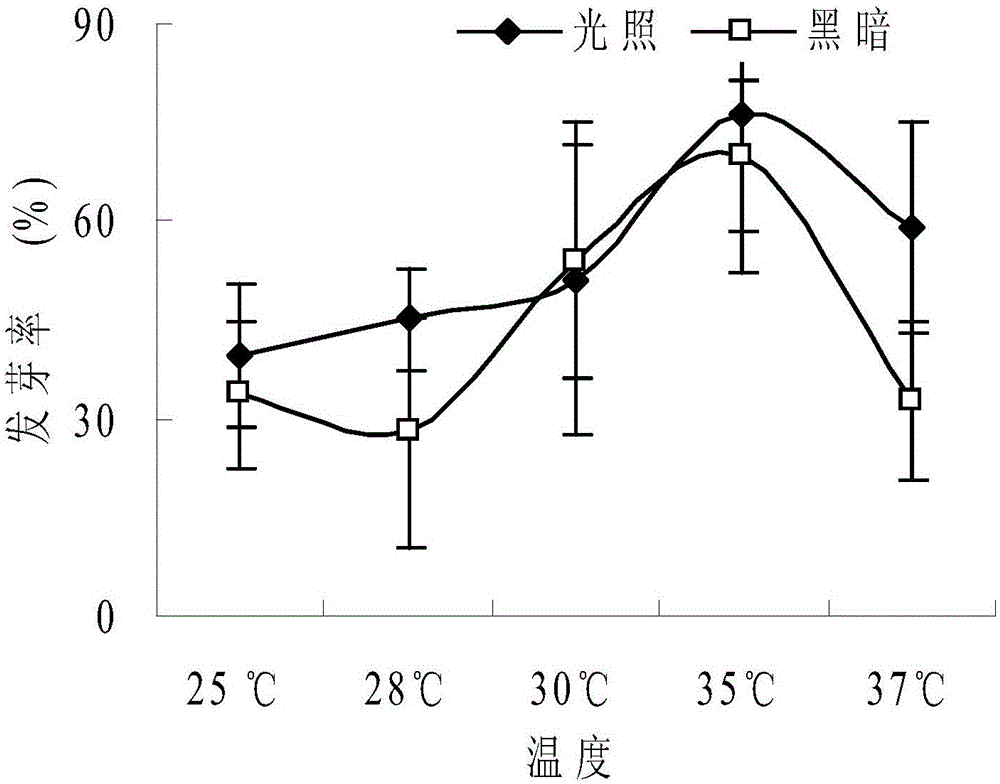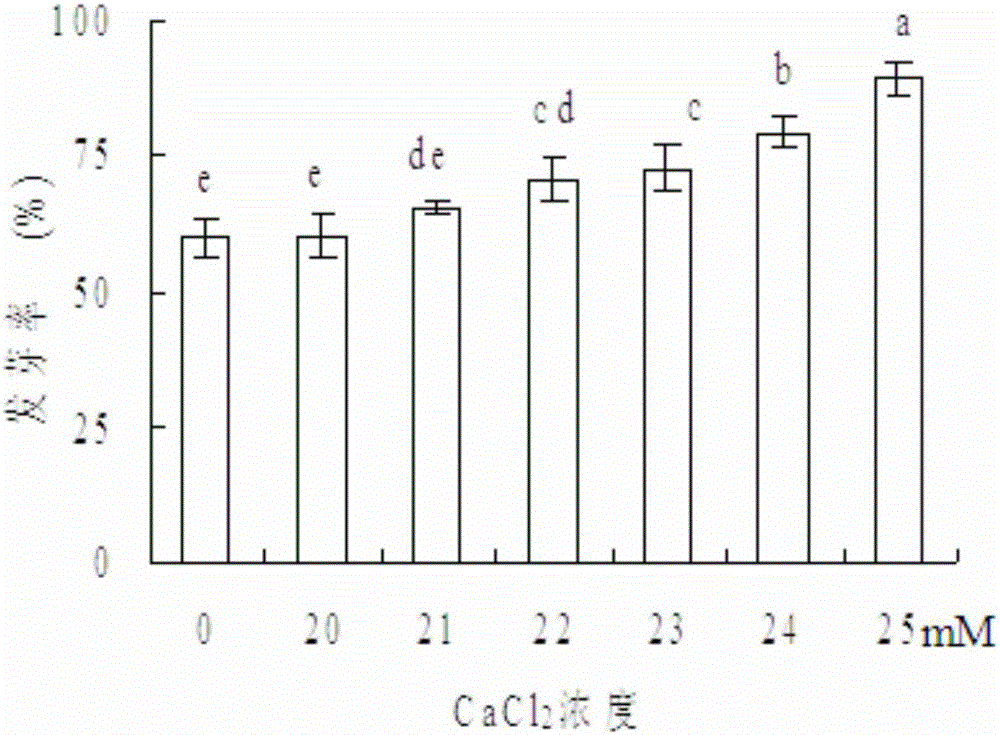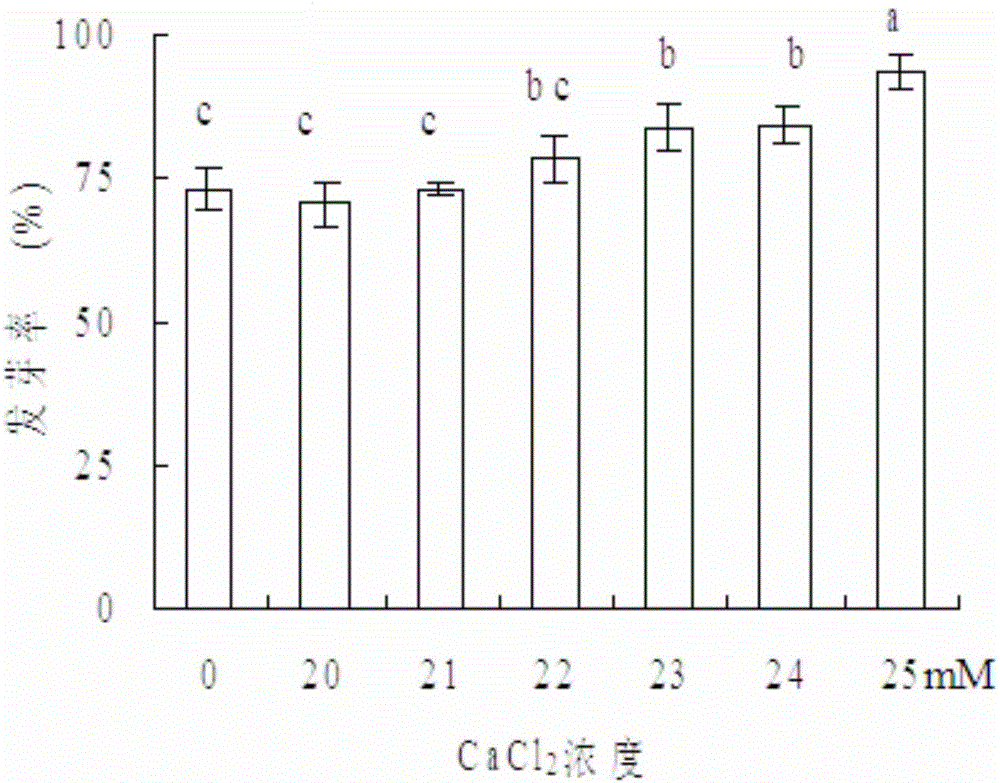Method for breaking secondary dormancy of morus alba seeds
A technology for seeds and mulberry trees is applied in the field of releasing secondary dormancy of mulberry seeds, which can solve the problems of low germination rate and the like, and achieve the effects of improving germination rate, releasing dormancy and short treatment time.
- Summary
- Abstract
- Description
- Claims
- Application Information
AI Technical Summary
Problems solved by technology
Method used
Image
Examples
Embodiment 1-7
[0023] The present invention provides a method for releasing secondary dormancy of mulberry seeds, comprising the following steps:
[0024] Step 1, the mulberry seeds stored in the seed storage pit at 0-5°C are selected; mulberry seeds with a water content of 5% to 8%, a purity of 97% to 99%, and a purity higher than 99% are selected.
[0025] Step 2, soaking the seeds: soak the mulberry seeds in the concentration of 0mM, 20mM, 21mM, 22mM, 23mM, 24mM, 25mM CaCl 2 in the solution for 24 hours;
[0026] Step 3, tiling the seeds: place a double-layer filter paper in the petri dish, drop the same amount of sterile water on the filter paper until a water film is formed on the surface of the filter paper, take 0mM, 20mM, 21mM, 22mM, 23mM, 24mM, 25mM CaCl respectively 2 Seeds soaked in solution of 2 After the solution, 100 seeds with basically the same size and color were selected and plated on the petri dish; three biological replicates were performed.
[0027] Step 4, germinatio...
Embodiment 8-12
[0033] The present invention provides a method for releasing secondary dormancy of mulberry seeds, comprising the following steps:
[0034] Step 1, selection of mulberry seeds: mulberry seeds stored in 0-5 ℃ preservation cellar; select mulberry seeds with water content between 5% and 8%, purity between 97% and 99%, and clarity higher than 99% ;
[0035] Step 2, soaking the seeds: soak the mulberry seeds in a concentration of 25mM CaCl 2 in the solution for 24 hours;
[0036] Step 3, laying the seeds flat: place a double layer of filter paper in the petri dish, drop an equal amount of sterile water on the filter paper until a water film is formed on the surface of the filter paper, and wash the CaCl on the surface of the seeds with clean water 2 , choose 100 seeds with basically the same size and color, and spread them on the petri dish;
[0037] Step 4, germination culture: place the petri dish in an incubator with a relative humidity of about 80%, and set the temperature o...
PUM
 Login to View More
Login to View More Abstract
Description
Claims
Application Information
 Login to View More
Login to View More - R&D
- Intellectual Property
- Life Sciences
- Materials
- Tech Scout
- Unparalleled Data Quality
- Higher Quality Content
- 60% Fewer Hallucinations
Browse by: Latest US Patents, China's latest patents, Technical Efficacy Thesaurus, Application Domain, Technology Topic, Popular Technical Reports.
© 2025 PatSnap. All rights reserved.Legal|Privacy policy|Modern Slavery Act Transparency Statement|Sitemap|About US| Contact US: help@patsnap.com



